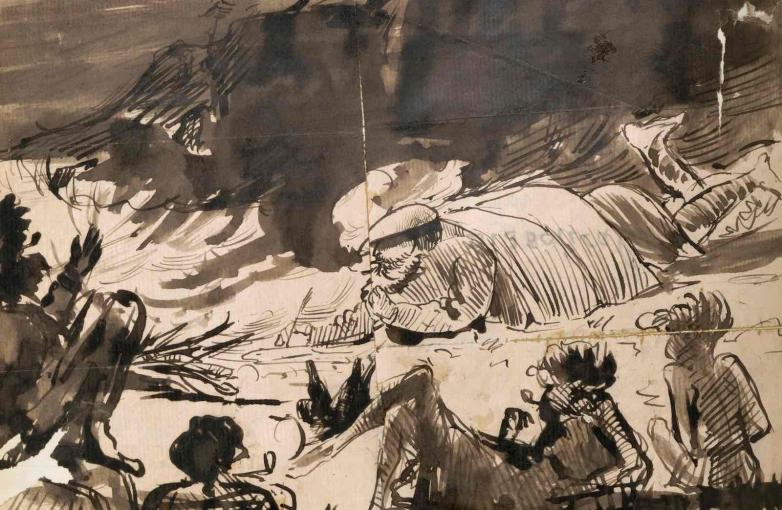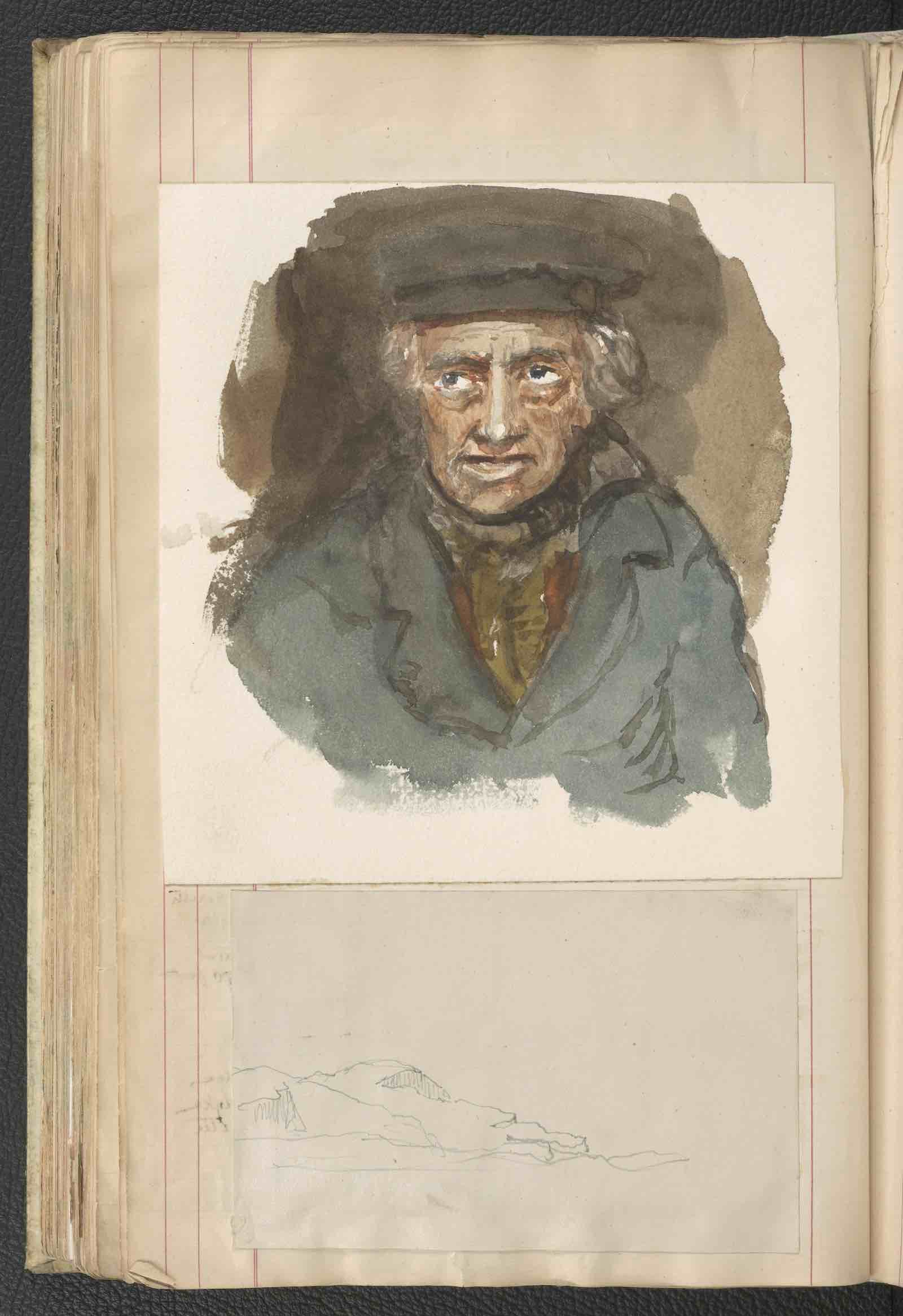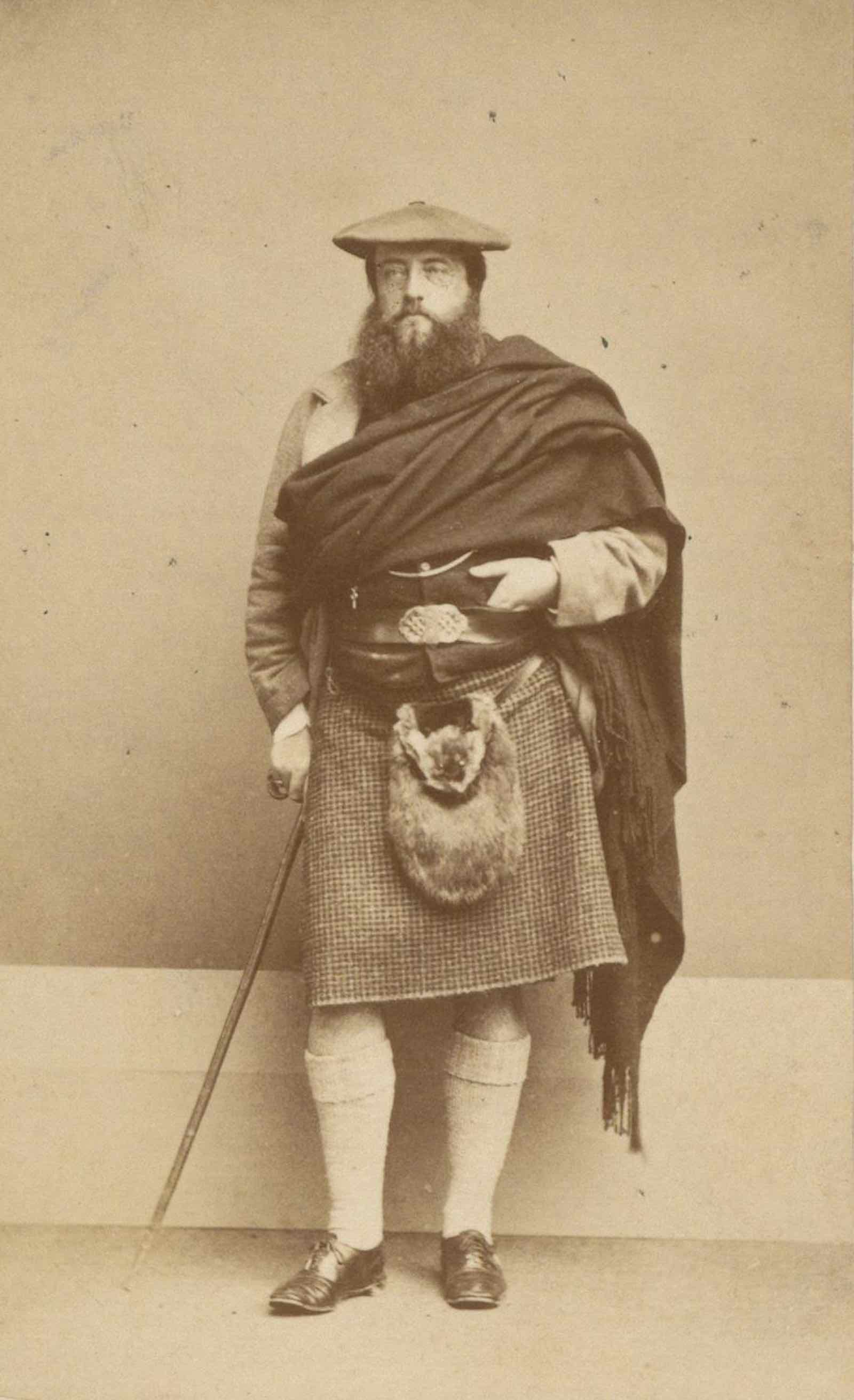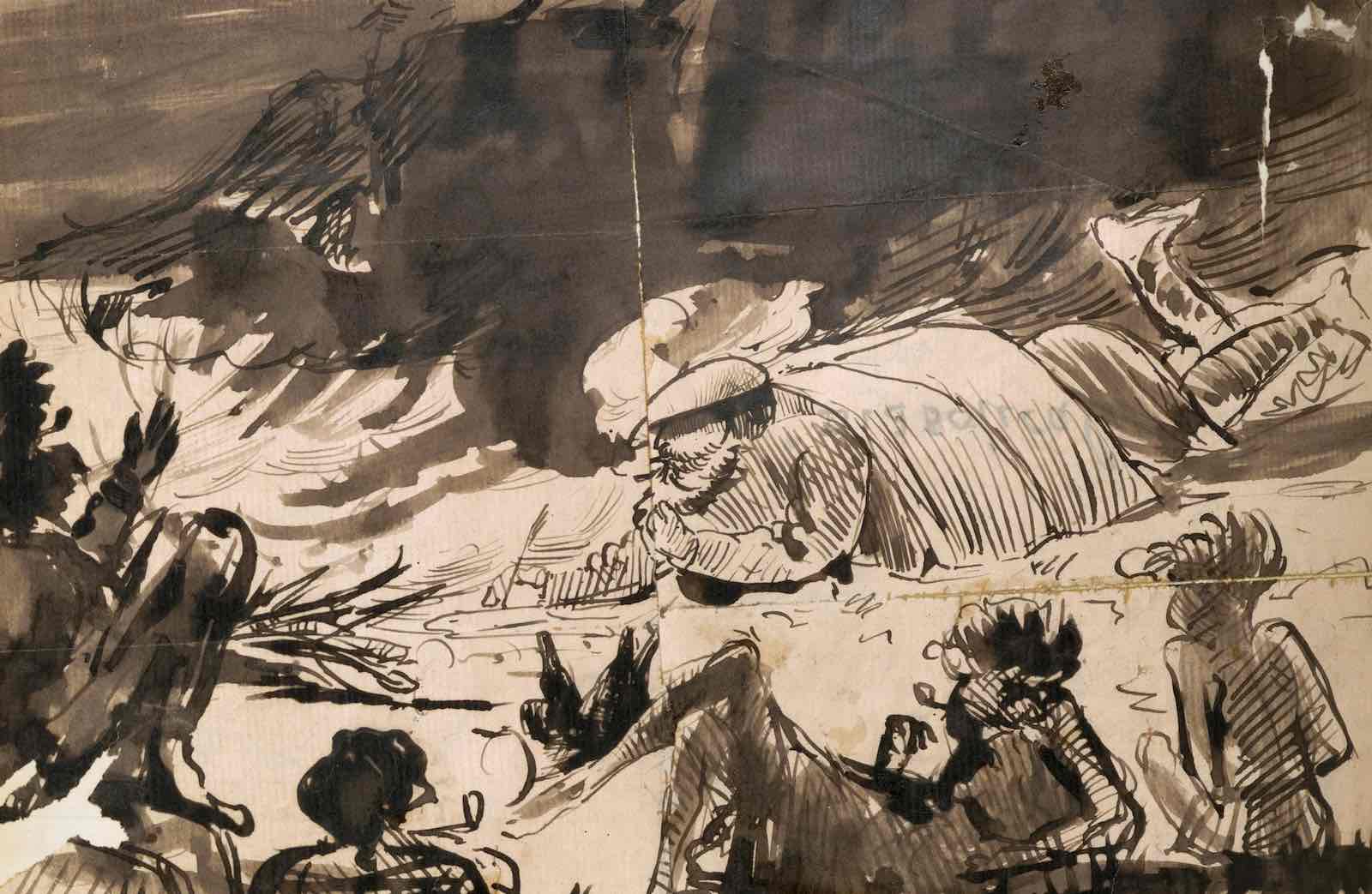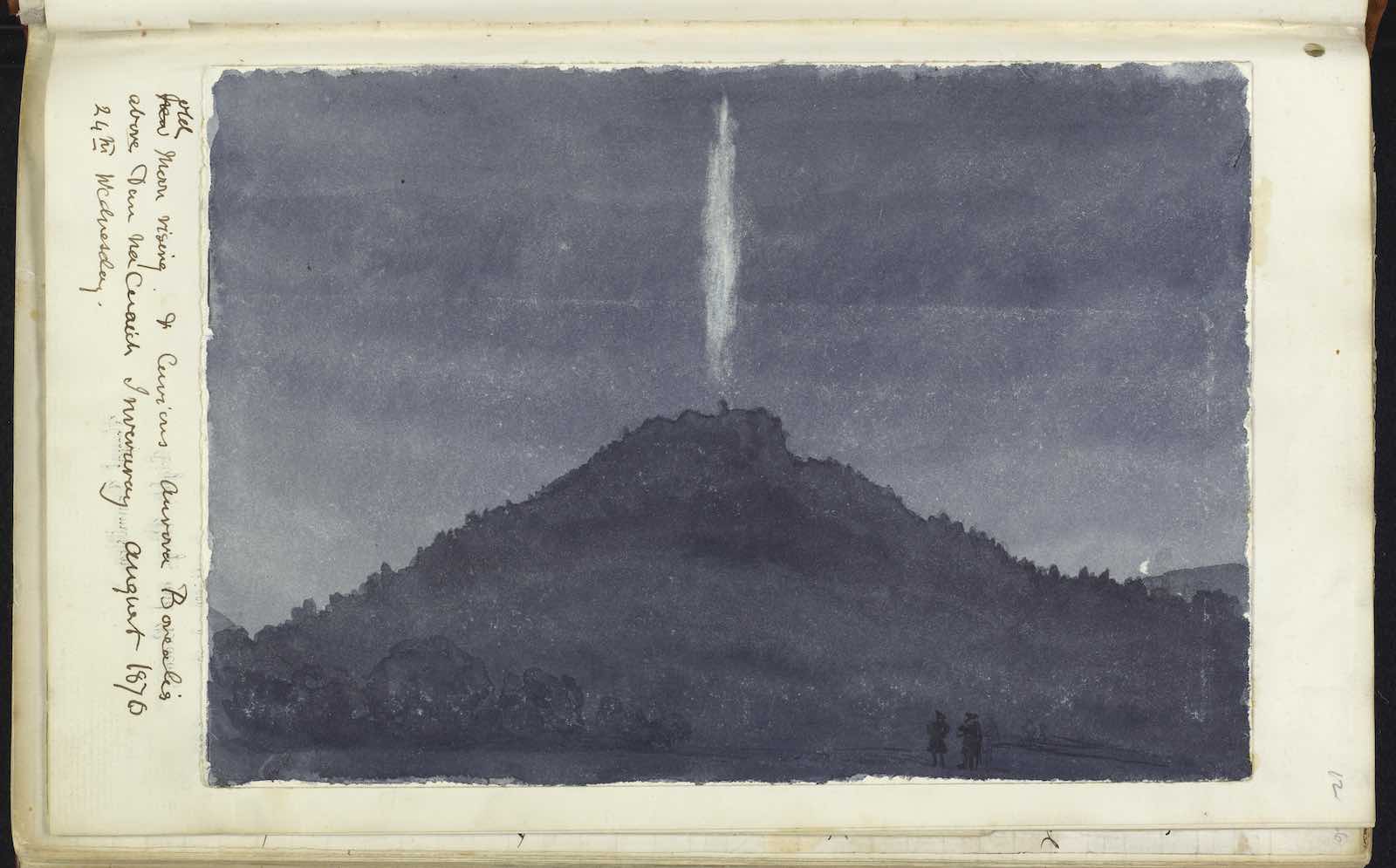There are a few varieties of folktales in the Gaelic tradition. There are the hero sagas, similar to those which are told in Ireland involving Fionn Mac Cumhaill (Finn McCool) and other household names. However, it is the other kind – the more localised folktales involving giants, witches, and dark tales involving malevolent creatures – that Campbell was most concerned with saving. These existed solely in the oral tradition at a time that the storytelling population was dwindling in parts of Scotland.
“A number of the stories have close parallels in the story collections from other countries, such as The Frog Prince or The Town Musicians of Bremen in the Grimms’ tales," said Dr Hogg. "Campbell was really pleased to discover these stories and their connections to other parts of the world, so for him, these would have been among the most exciting ones.”
Campbell documented his travels by making many notebooks, but he was also a keen visual artist, and captured the essence of people, communities, sites and landscapes through sketches and paintings. The exhibition will highlight his own personal library (a collection held at the National Library) and the manuscripts and published works of his endeavours. Visitors will also experience Campbell’s work through a range of mixed media – his artworks as well as Gaelic folktales brought to life via new sound recordings specifically made for the exhibition.
Shona MacLennan, Ceannard (CEO), Bòrd na Gàidhlig, the public body responsible for promoting Gaelic language and culture, said: “We are delighted to see this exhibition being available bilingually and celebrating the important work of John Francis Campbell. Gaelic history and culture enriches the lives of many and it is vitally important that these are represented in Gaelic itself whilst adding to the aims of the National Gaelic Language Plan that Gaelic is used more often, by more people in a wider range of situations. We look forward to this being the first of many bilingual exhibitions.”
Sgeul | Story: Folktales from the Scottish Highlands will open in June 2023 and run until April 2024. Entry to the National Library’s exhibitions is free.

